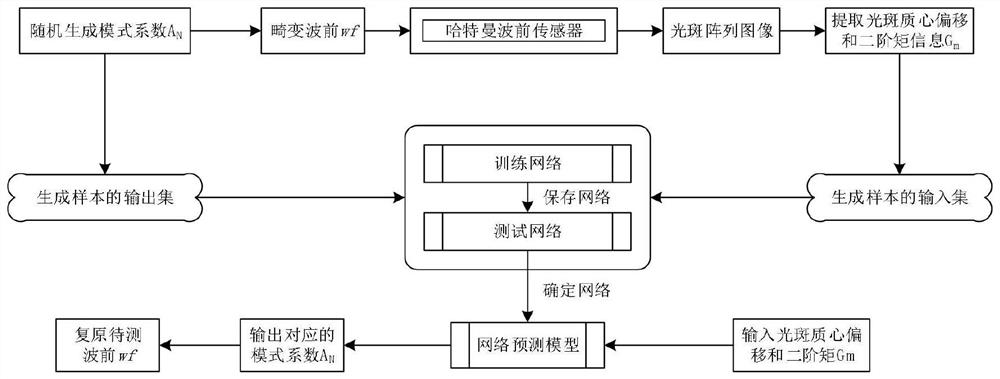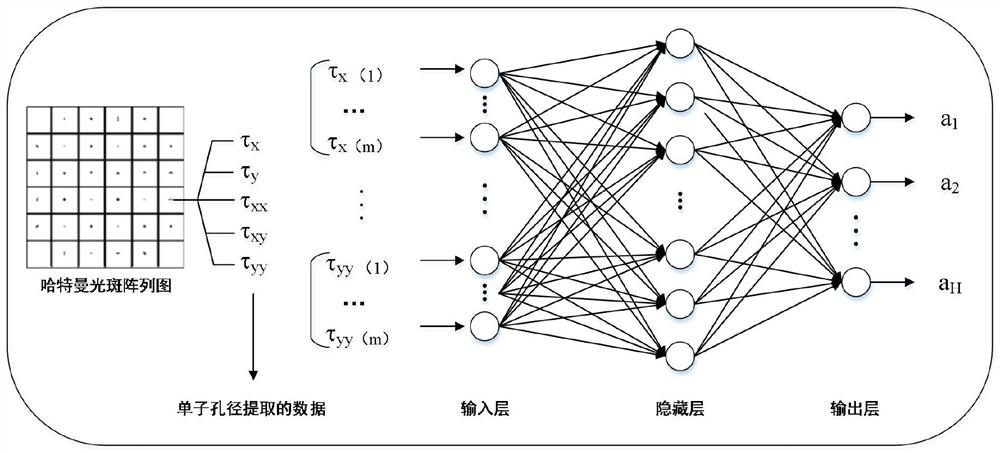Mode wavefront restoration method based on neural network
A neural network and mode wave technology, which is applied in the field of optical information measurement, can solve the problems such as the increase of the calculation error of the spot centroid, the limitation of the detection performance of the Hartmann sensor, and the reduction of the wavefront restoration accuracy, so as to reduce the number and meet the wavefront requirements. , increase the effect of effective information
- Summary
- Abstract
- Description
- Claims
- Application Information
AI Technical Summary
Problems solved by technology
Method used
Image
Examples
Embodiment Construction
[0036] In order to make the purpose and technical solution of the present invention clearer, the present invention will be further described in detail below in conjunction with specific embodiments and with reference to the accompanying drawings.
[0037] figure 1 It is a flowchart of a neural network-based pattern wavefront restoration method. The Shack-Hartmann wavefront sensor uses a 6×6 microlens array with a focal length of 30mm and a sub-aperture size of 500μm. The resolution of the CCD at the focal plane is The resolution is 300×300pixel, the pixel size is 10μm, and the wavelength is 1064nm. The neural network used is an extreme learning machine.
[0038] The present invention extracts the spot centroid offset and second-order moment information according to the spot intensity distribution, and uses the extreme learning machine network to fit the relationship between the spot centroid offset and the second-order moment information and the wavefront mode coefficient to b...
PUM
 Login to View More
Login to View More Abstract
Description
Claims
Application Information
 Login to View More
Login to View More - R&D
- Intellectual Property
- Life Sciences
- Materials
- Tech Scout
- Unparalleled Data Quality
- Higher Quality Content
- 60% Fewer Hallucinations
Browse by: Latest US Patents, China's latest patents, Technical Efficacy Thesaurus, Application Domain, Technology Topic, Popular Technical Reports.
© 2025 PatSnap. All rights reserved.Legal|Privacy policy|Modern Slavery Act Transparency Statement|Sitemap|About US| Contact US: help@patsnap.com



